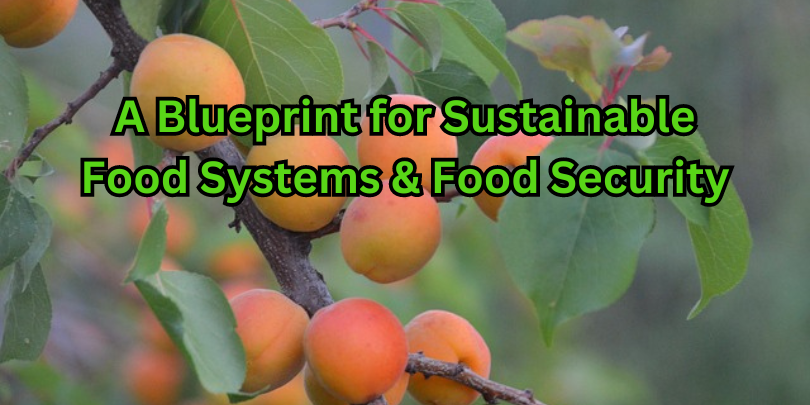Introduction:
Undoubtedly, the urgency for a sustainable food system is more palpable than ever. With the global population skyrocketing and climate change disrupting traditional farming methods, the world stands at a critical juncture. However, there’s a silver lining: regenerative agriculture. In this article, we’ll dive deep into the transformative potential of regenerative farming, exploring its multifaceted benefits for food security, environmental sustainability, and social inclusion.
The Crucial Role in Food Security:
“Imagine a world where we don’t have to worry about running out of food,” says John, a regenerative farmer from Iowa. First and foremost, regenerative agriculture enhances food security by increasing agricultural yields. This is achieved through time-tested practices like crop rotation, the use of cover crops, and organic soil amendments. Not only do these methods augment production, but they also enrich the soil. Consequently, healthier soil leads to more robust crops, thereby boosting food security.
Building Resilience in the Face of Climate Change:
Furthermore, regenerative agriculture is a game-changer when it comes to climate resilience. “We’ve seen first-hand how these farming techniques have made our land more resilient to floods and droughts,” notes Emily, an agricultural researcher. By focusing on soil health and biodiversity, regenerative agriculture empowers farming systems to weather the unpredictabilities associated with climate change. This translates to a more stable food supply, even when Mother Nature throws us curveballs.
Eco-Friendly Food Systems: More Than Just Production:
Moreover, the benefits of regenerative agriculture extend far beyond mere food production. A truly sustainable food system considers not just how food is grown, but also how it is distributed, processed, and consumed. Accordingly, regenerative farming can catalyze local food systems, reducing the carbon footprint linked to long-distance transportation. “It’s a win-win situation. We’re feeding our community and taking care of the planet at the same time,” beams Sarah, a local food advocate.

Championing Biodiversity:
In addition, regenerative agriculture offers the incredible benefit of promoting biodiversity. By limiting pesticide use and employing natural pest control methods, we create an environment where wildlife can thrive. As a result, this not only aids in ecological balance but also fosters habitats for essential pollinators.
Inclusivity and Economic Opportunities:
Interestingly, the labor-intensive nature of regenerative agriculture opens doors for more people to get involved. This is particularly advantageous for small-scale farmers and underrepresented communities. “For us, regenerative farming isn’t just about food; it’s about community empowerment,” asserts Carlos, a community leader.
Overcoming Obstacles:
Nevertheless, transitioning to regenerative farming practices is not without its challenges. One of the most significant barriers is the initial cost and the steep learning curve. However, through governmental aid, community support, and education, these hurdles can be overcome. “We need to educate our farmers and provide them with the resources they need,” stresses Laura, an agricultural policy expert.
Conclusion:
In summary, the role of regenerative agriculture in building sustainable food systems and enhancing food security is monumental. From boosting crop yields and fortifying resilience against climate change to fostering eco-friendly food systems and social inclusivity, the advantages are manifold. So, as we stand at this pivotal moment in history, let’s take the steps necessary to usher in an era of regenerative agriculture — for the health of our planet, our communities, and generations yet to come.
Take Action Now: Your Role in Advancing Regenerative Agriculture
So, you’ve learned about the unparalleled potential of regenerative agriculture to reshape our food systems, combat climate change, and promote social equity. The question now is, what can you do to contribute to this transformative movement?
For Consumers:
Vote with your wallet. Choose to buy products that are sustainably grown using regenerative practices. “It’s crucial for consumers to recognize the power they wield in the marketplace. Your choices can drive change,” emphasizes Rachel, a sustainability consultant.
For Farmers:
Consider transitioning to regenerative agricultural practices. Even small changes can have a significant impact. Reach out to local organizations or agricultural extension services to learn about resources, training, and potential funding opportunities.

For Policy Makers:
Listen to your constituents and advocate for policies that support regenerative agriculture. Funding, research, and educational programs can pave the way for widespread adoption of these sustainable methods.
For Everyone: The Power of Collective Action in Advancing Regenerative Agriculture
Share this article and talk to your friends, family, and community about the importance of regenerative agriculture. Knowledge is power, and the more people are aware of the benefits of these practices, the faster we can drive change.
“Don’t underestimate the role each one of us can play. We’re all stakeholders in the future of our planet and our food system,” says David, a longtime environmental activist.
Don’t wait for change—be the change. Join the movement towards a more sustainable and equitable world through regenerative agriculture today! Visit our EAT Community to join hundreds of teachers, coaches, and mentors to get you started!
Related Articles and Resources:
- Boost Food Security and Sustainability with Regenerative Agriculture
- Regenerative Agriculture: Impacting the Ecosystem and Improving Health
- 5 Small But Highly Effective Ways You Can Have A Direct Impact On The Planet
- Preserving Forest Biodiversity for a Sustainable Future
- 5 things you need to know about regenerative agriculture
- Transitioning to Regenerative Organic Agriculture
- 4 Ways To Make Your Business Greener



